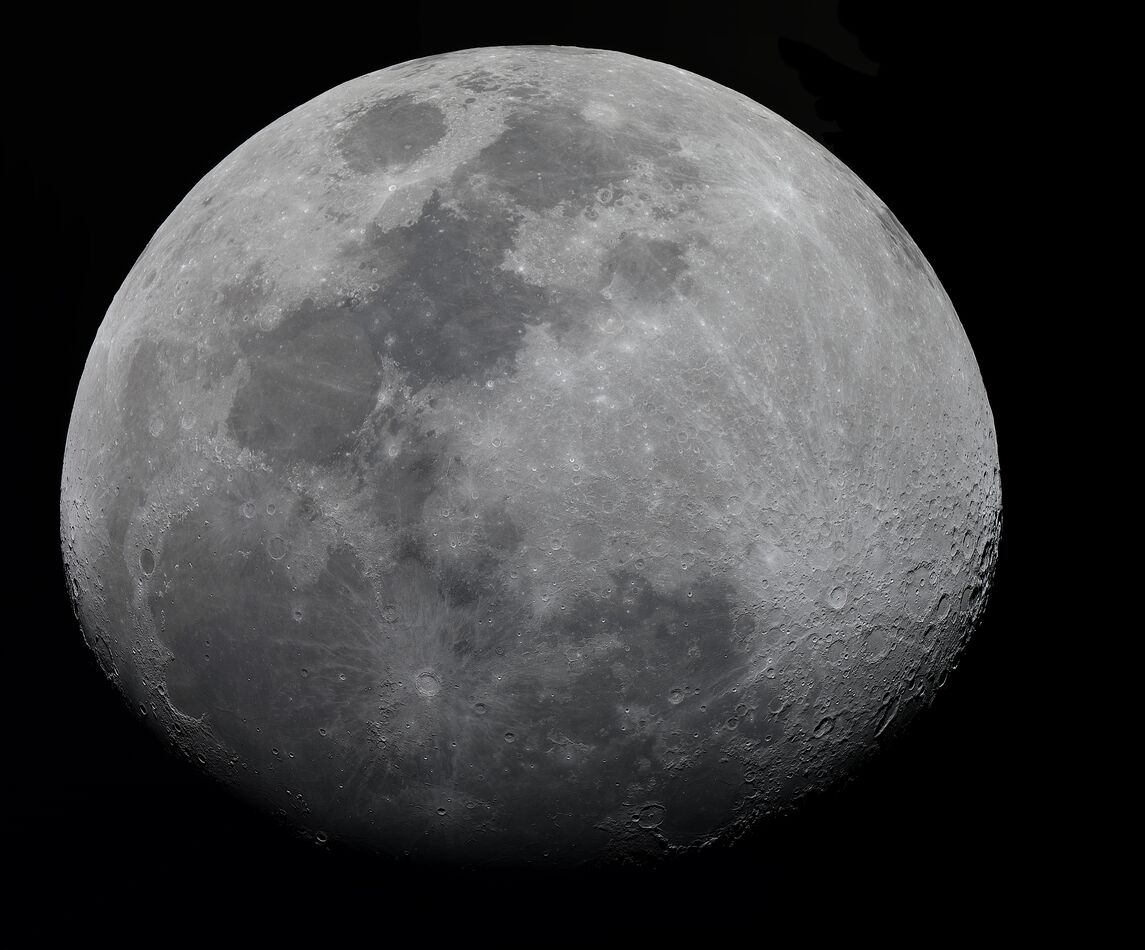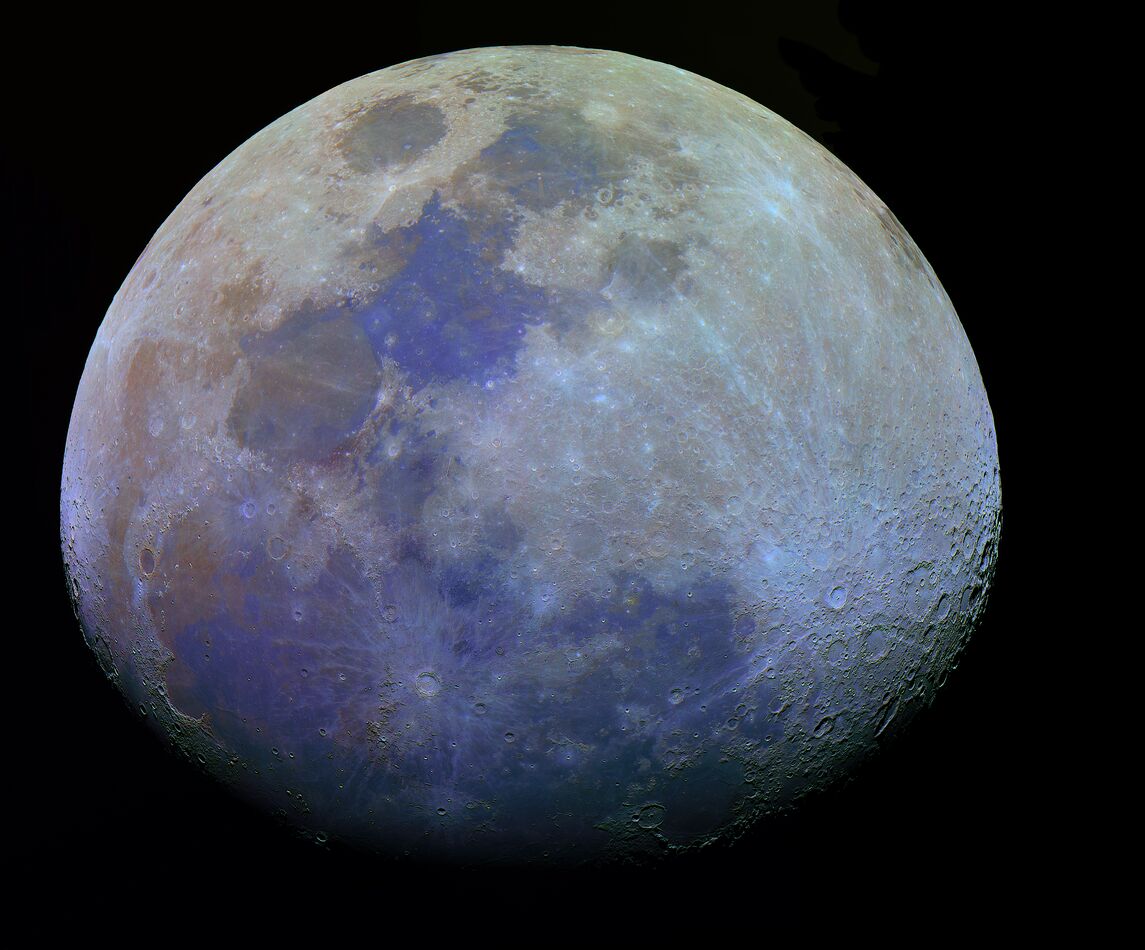Posts for: Ballard
Apr 29, 2024 19:04:42 #
Hi rbtree
You are very welcome. If you have any more questions feel free to ask.
You are very welcome. If you have any more questions feel free to ask.
Apr 28, 2024 21:13:55 #
rbtree wrote:
Great stuff!! Which scope? Tracker?
I now have a Skywatcher Star Adventurer GTi--have yet to dial it in..much to learn!
I now have a Skywatcher Star Adventurer GTi--have yet to dial it in..much to learn!
Hi rbtree
Thanks for checking out the lunar images and for the comment.
I used a Meade LX 200 16 inch Schmidt Cassegrain telescope with a canon EOS 5D Mark IV in 4K video mode to capture multiple 2 minute videos. The mount used was an Astrophysics 1600GTO mount set for lunar rate tracking. Each video was process with PIPP (Planetary Imaging PreProcessor) to convert the .mov files from the canon to .ser files that could be used by Autostakkert to stack the video frames. I then use Registax6 to do some wavelet processing on each stacked image to sharpen it up. The images where then combined with Microsoft ICE (Image Composite Editor) to make a full image of the moon since the prime focus of the Meade is 4064mm and only a part of the moon could be imaged in each video. Pixinsight was used to increase the saturation on the second image. Note: The only software that isn't freeware is Pixinsight.
If you are interested my Website has other astro images I have taken and an information section on each image (the i icon). Most of the images contain information on how the image was taken (filters, camera, lens, number of images stacked and processing done).
https://ballardbare.smugmug.com/Astronomical-Images
Apr 25, 2024 20:12:27 #
bwana wrote:
I much prefer the 1st image; much more natural. However, the color enhanced version is nicely artistic...
bwa
bwa
Hi bwana
Thanks for viewing the images of the Waxing Gibbous Moon and for the comment. The color image although not natural does give a better idea of the mineral distribution on the moon. The orange areas show higher concentrations of iron oxide (FeO) and bluer areas show higher concentrations of Titanium oxide (TiO2). The whiter areas are locations of more recent impacts.
Apr 25, 2024 12:16:13 #
Hi Bubalola
Thanks for viewing the Gibbous Moon Image and the Thumbs up.
Thanks for viewing the Gibbous Moon Image and the Thumbs up.
Apr 24, 2024 10:52:54 #
alberio wrote:
At first I was about to say, you have very steady skies, until I read your post. People that take single exposures of the Moon don't realize how much the atmosphere plays a part.
Nice job and the details came out beautifully.
Nice job and the details came out beautifully.
Hi alberio
Thanks for checking out the image and for the comment. Yep, the longer the focal length the more the atmospheric turbulence blurs the detail, however stacking many images greatly reduces the effect of that turbulence.
Apr 24, 2024 01:56:24 #
The images below were taken on the evening of 4/19/2024 at a 4064mm focal length using a full frame DSLR in 4K video mode. Since the full image wouldn't fit into a single frame multiple videos were taken each around 2 minutes long. For each video ~ 50% (~1800) of the best frames were stacked to improve the image to reduce the atmospheric turbulence. The stacked images were then combined into a single image of the entire moon. The first image is the moon as it appears to the eye. The second image has the color greatly enhanced to bring out the subtle colors on the lunar surface. Both images required some compression to fix under the 20meg limit.
All questions comments and suggestions are welcome.
All questions comments and suggestions are welcome.
Mar 2, 2024 19:02:32 #
bwana wrote:
I redid the LRGB combination as HaHa0.9xOiiiOiii. I think using Ha as Luminance did improve the image but still fighting thin cloud to a degree.
Thanks for the suggestion.
bwa
Thanks for the suggestion.
bwa
Nice detail in the image. I like the contrast in the nebula.



Mar 1, 2024 14:19:53 #
bwana wrote:
White Light grayscale
Shot with a Sony A7R V camera, Sony FE200-600, Sony 1.4x TC and Orion solar filter, tripod mounted.
Best single image from 46 images captured. Pre/postprocessed in PIPP, Lightroom and Photoshop.
Earth has been added for reference. You'll find it below the big sunspot on the right.
Enjoy!
bwa
Shot with a Sony A7R V camera, Sony FE200-600, Sony 1.4x TC and Orion solar filter, tripod mounted.
Best single image from 46 images captured. Pre/postprocessed in PIPP, Lightroom and Photoshop.
Earth has been added for reference. You'll find it below the big sunspot on the right.
Enjoy!
bwa
Nice contrast that really brings out the granularity in the solar image. Trees can be a pain alright.



Mar 1, 2024 14:14:51 #
bwana wrote:
I've been considering a smart telescope package su... (show quote)
Great images of M42. I have played with assigning different filter images to different color with a fair amount of success. In some cases using Ha for the luminance is quite useful. Note M42 also has a fair amount of SII that can bring out some other details in the image.



Feb 26, 2024 13:15:15 #
alberio wrote:
I'm just remembering the 2017 Great American Eclipse of 2017. I wish I could post a video of the moment when people could remove the eye protection. The first is my version of the Diamond Ring, with Rubies on both sides, then just after the ring where the prominence took front stage, then the Corona.
Great shots of the 2017 eclipse. I hope it will be clear for the upcoming eclipse.



Feb 26, 2024 13:13:05 #
pfrancke wrote:
Orion, a place that draws a newcomer as a moth is... (show quote)
Nice work on M42 and running man nebula.



Feb 26, 2024 13:11:09 #
bwana wrote:
Shot the full moon in two sessions. Once at midnight and again at 7:30am.
The midnight pix with a Sony A7R V and Sony FE 200-600 lens. The morning shot with a Sony RX10 IV.
It didn't really look all that 'mini'.
Enjoy!
bwa
The midnight pix with a Sony A7R V and Sony FE 200-600 lens. The morning shot with a Sony RX10 IV.
It didn't really look all that 'mini'.
Enjoy!
bwa
Nice contrast and detail on the full moon.



Feb 26, 2024 13:09:05 #
bwana wrote:
A reasonable day for some solar imaging. br br Us... (show quote)
Excellent detail on those images.



Feb 23, 2024 14:40:27 #
Hi bwa
Thanks for checking out the solar images and for the comment.
Thanks for checking out the solar images and for the comment.
Feb 23, 2024 11:19:25 #
alberio wrote:
Nice sharp images and your filter creation works well. Also probably easy to remove at totality. Thousand Oaks has quality products.
Hi alberio
Thanks for checking out the solar images and for the comment. The film seems to work well, will be easy to change out if it gets damaged and is a lot less expensive than the glass filter I have for my refractor. I plan to use both for the eclipse one with my old canon EOS 60D and the other with my canon 5D Mark IV.

